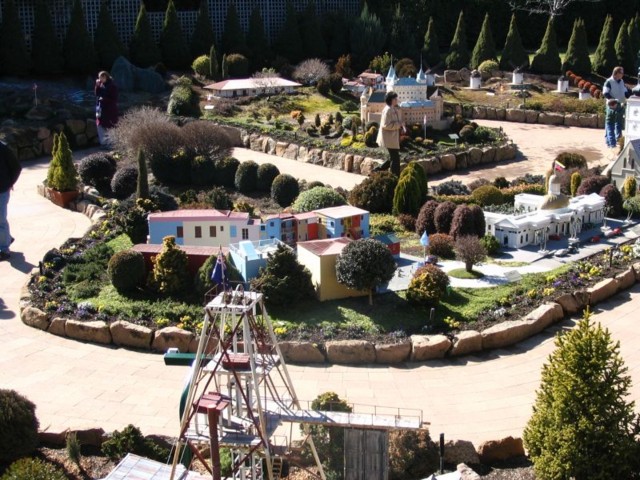
I don't know what you may be expecting of Canberra. It is the capital city of one of the largest countries in the world, so you may be comparing it with the grandeur of Washington, the majesty of Moscow or the hustle and bustle of Beijing. If so, you're completely on the wrong track.
Canberra is a city of 300,000 people, but you really can't tell it when you're there. It got to be the capital city almost by accident, when Sydney and Melbourne couldn't decide among themselves which will be the capital, and the result was that a little, out-of-the-way town was chosen to become the new country's capital.
The name of the city has similar history: there was a competition in order to choose the best name for the new capital city, but all suggestions were so horrible that the city's original name, the one they've been using all along, won almost by default. Sadly (as Bill Bryson mentions in his book), nobody bothered to inform the wife of the Governor General of the time regarding this name, so when she inaugurated the new city, she named it can-BERRA, instead of the city's true name, whose pronunciation is CAN-berra. Many people still make this mistake to this very day.
The city started its way with approximately 30,000 citizens and grew to ten times that size. One has to admire the city planning, though, because no matter how hard you try, you can not believe that a third of a million people live there. Just to give you a feel for it, when we left Canberra towards the neighboring town of Queanbeyan, which is a town with one-tenth the number of people that are in Canberra, we drove into the main street of Queanbeyan and said to ourselves: "Wow! We finally found where the city is."
Instead of a city, when you come to Canberra what you see is a large garden. The whole city, in fact, is arranged like an English garden, except instead of hedges shaped like circular mazes, you have lawns that have circular streets running through them. In fact, traffic circles have grown in Canberra into an art form. Every street is either a part of a traffic circle, or a road leading into one. They have abused the concept of a traffic circle to its very limits, having concentric traffic circles, traffic circles with street lights in them, and even - the horror - traffic circles that run both ways.
The only thing that bothered us about the great gardens of Canberra is that the gardener didn't seem to think about how the city will look in different seasons. For example, much of what is not lawn is designated rose gardens. However, we came to see Canberra in the middle of winter, and all we saw were dead bushes. The only flowers to be seen in the entire city were the violets. So, let us recommend here to visit Canberra in the spring, instead.
Other than this strange implementation of traffic circles and the fact that the city is a large garden, we didn't know much about Canberra before we entered it. We thought we'll just skirt through it, make a sleep-over stop there, and continue to places where there is more to do. After all, do we really need to see Australia's declaration of independence? Do we really need to visit the parliament house? (This last, by the way, is located quite fittingly in the very center of the largest traffic circle in the city, and is quite a sight to see from the outside. We didn't bother going in.)
What changed all this was a short visit we made, as we entered Canberra, to the tourist information center. This is a stop generally useful in finding a hotel, but here it changed our perception of where we were. First of all, even before entering, we came across large, computerized displays that announced that no roads are currently blocked, and that the weather for the remainder of the week is projected to be warm and sunny. (Well, warm is a relative term. This meant that at one time I even ventured out of the car without a coat for a short walk, but no more than that.)
This was something that was very important to us, because on the way to Canberra we saw many TV reports about how, just a day before, temperatures in Canberra dropped to the lowest they were in the last 20 years, and many of the roads leading into it were intermittently blocked. (Incidentally, these reports also stated that the Great Ocean Road, which we drove on only two days earlier in our Melbourne visit, was also iced over and impassable. We seemed to have horrible weather both before and after us, but where we were was quite all right.)
No blocked roads and warm, sunny weather meant that we could stay a little longer in Canberra, but we didn't know whether there was any point in doing so. Here, the other sign, this one hand-written and hanging above the lintel on the entrance to the tourist information center, helped us by proclaiming: "Canberra: It's Got Everything!", which turned out to be the slogan for the entire city. It didn't really have everything, but looking in the guidebooks to the area that were posted in the tourist information center, we did see quite a few attractions of the sort that interested us: science museums, a gigantic carillon that play for the entire city every hour, a space observatory and the like. Doing a rough estimate of everything that was there, we decided on booking a hotel for no less than three days.
Canberra, as mentioned, turned out to be a large garden, and this, to a city-boy like me, was very unnerving. I kept asking the people we met how they were able to live in a place like this. We always got the same answer. People told us that they weren't really citizens of Canberra. They grew up someplace else, moved here for a couple of years, and were planning to move on. Was it boring here? Sure, but the place is very convenient, once you get used to it.
This idea, that the place was convenient was repeated to us so many times that we decided to re-invent the town's slogan. We suggest: "Canberra: It's convenient!". Truly, a city you live in should have a pulse. Being convenient just doesn't cut it on its own.
Some of the things we saw in Canberra were beautiful. For example, this
is a photograph from a place called "Cockington Green Gardens". It is very much like "Mini-Israel" (without all the advertisements), but with a subtle difference: here there was no attempt to recreate Australia. What they try to recreate in miniature is a typical English village. Why an English village? That's a question for all of Australia to answer. Until a few decades ago, Australians saw the British island as their real homeland. The situation is such that even today they celebrate "Queen's Day" as a national holiday every year, even though it isn't even their queen. Go figure.
In recent years, Cockington Green Gardens started diversifying, and now they have an area designated for "buildings from around the world". Nothing from Australia, though. Not a single piece.
(I've been wondering about that, to be honest. In Melbourne, we even came across "Cook's cottage", which is a tourist attraction depicting a recreation of the house of the parents of Captain James Cook who, officially, was the first European to stumble across the antipodean continent. This means that one of Melbourne's greatest attractions is an English homestead, recreated in Australia complete with garden and hedge. Should all these Australians have their heads examined? I think that might be a good idea.)
In Cockington, by the way, we came across this cute riddle. Click on the picture to get the solution to the following question: "What is this man doing?"
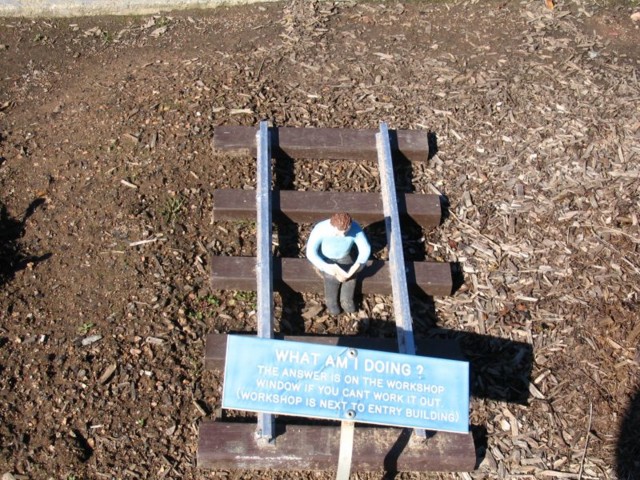
Some of the attractions in Canberra were fascinating. For example, by the old parliament house, we came across the Aboriginal protest tent, also called the Aboriginal embassy, where Aborigines are protesting for their right to own the land and continue to keep it as they have done for thousands of years. The story of the local Aborigine tribe is especially poignant, as in the process of planning the city of Canberra for it to have all these traffic circles, the urban engineer moved the local lake, lake Burley-Griffin, and now areas that have been sacred to the local tribe are just not there anymore, except, perhaps under a great deal of water. (More about this is told in the page dedicated to Aborigines and their tradition.)
Some of the things we saw in Canberra were flops. For example, we went to a local planetarium, and they asked us whether we wanted to see the kiddie show or the adult show. What we should have answered was "both", as we were both so completely ignorant of the constellations that can be seen below the equator. What we wanted to know would have only been explained to children. Instead, we answered that we wanted to see the adult show only. Turns out, this wasn't a planetarium show at all. It was a telescope-tour, in which the tour guide (an astronomer of the sort who knows what things look like and what they are named, but not what they are or why), pointed the telescope at distant galaxies and said "take a look at this".
Yet other things we saw in Canberra caught us by surprise. For example, we had no idea that we came in to Canberra exactly on the 60th anniversary to the end of world war II. This meant that the ANZAC (The Australia-New-Zealand Armed Corps) put on a spectacular show with parachuters, aerobatics, displays of everything ranging from tanks to unmanned submarines and even a hot-air balloon.
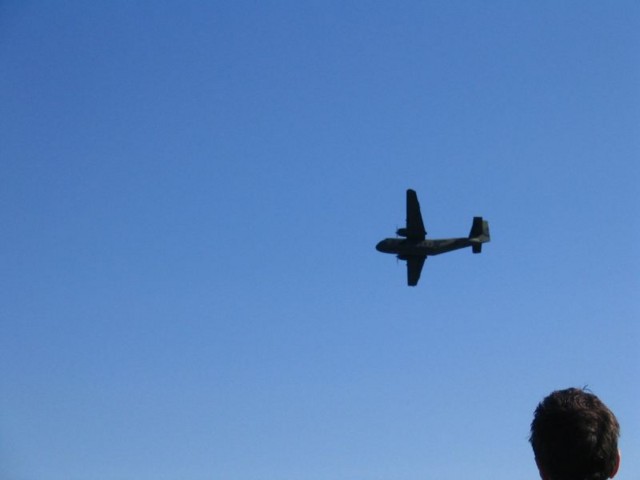
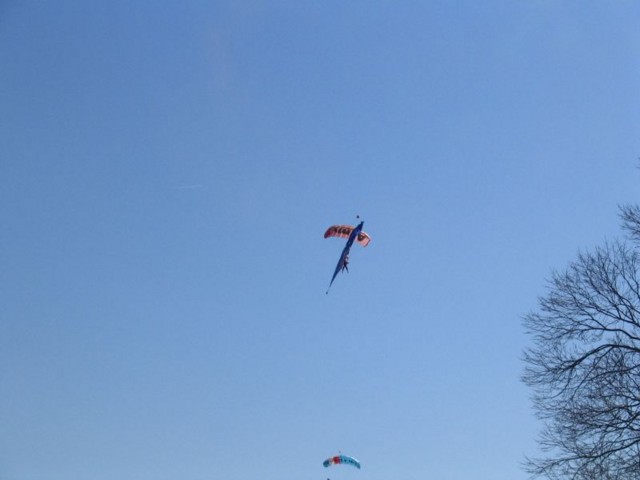
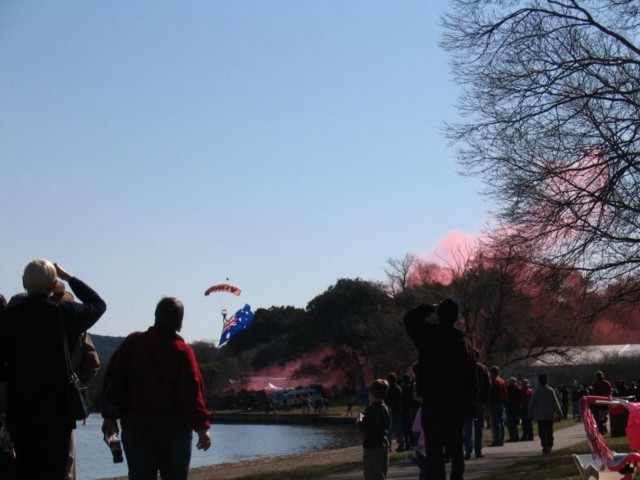
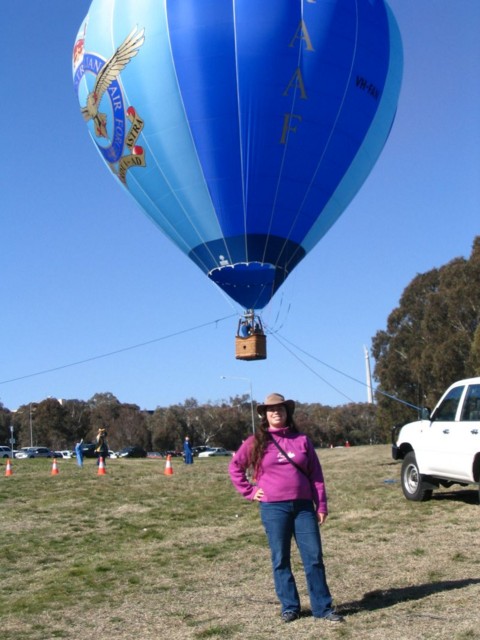
It was very well done, quite spectacular to see, and drew a large crowd.
Mostly, we realized, things in Canberra took more time to see than we had originally planned. I voted in favor of extending our stay to four days. Orit said that three days is enough and we should be moving on. In the end, what decided was a call to the hotel reception, in which they told us that we can stay for another day with no problem, but they'll have to move us to a different room. We didn't want to be moved around, so decided to head out as per our original schedule. That turned out to be a great choice, because on the day after we left we saw on the news that the Canberra area suffered large unexpected amounts of snow, and the city was cut off. It was the worst weather they had, reportedly, in twenty-eight years, and roads were blocked off so quickly, that they weren't able to get the kids out of their schools on time. Children were actually blocked inside their school buildings until evening, when the snow subsided a little and it was possible to clear the way. (Children living outside of Canberra still had to spend the night in town, though. The roads leading out were iced over for many kilometers.)
The choice of keeping to our original schedule meant that we had to curtail some of our planned activities. For example, the National Gallery of Australia
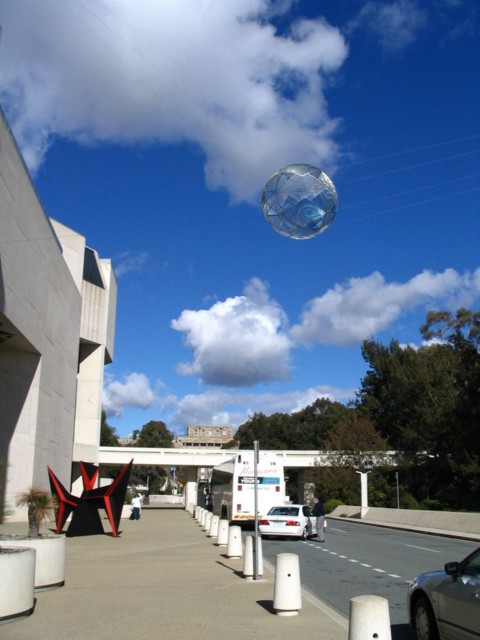
is something we only saw from the outside. (It has a garden of statues.)
Other activities, such the Canberra Deep Space Communication Complex (where the prize exhibit is a piece of lunar rock), had to be skipped entirely.
However, there was one activity that we decided (based on recommendations by Na'ama) neither to skip nor to shorten, and this turned out to be a wonderful choice: The National Museum of Australia.
This place, though a museum by name, is nothing like any museum either of us has ever seen. It tries to tell about the people of Australia, the land, the life and the culture, and does so by exhibits all of which are one-of-a-kind.
Here is a photograph of one such exhibit, called "The Garden of Australian Dreams". It is, of necessity, a non-interactive exhibit. The interactive ones were impossible to photograph.
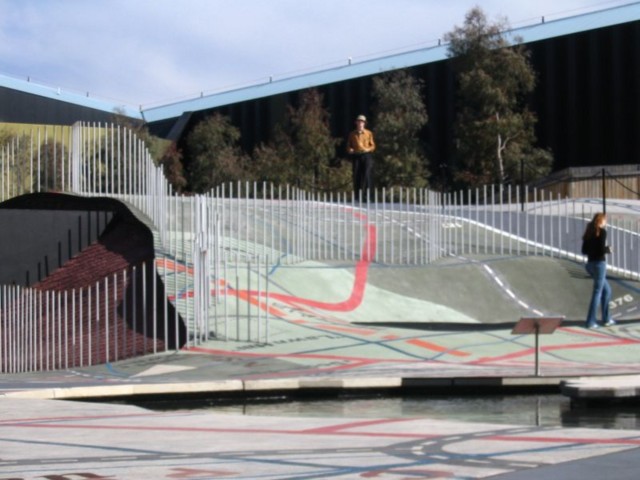
This is a giant-scale map of Australia, including state-boundaries, tribal boundaries, roads, rivers, precipitation, and more. In the picture, you see a depiction of the Dingo-fence, meant to keep Dingoes on one side and sheep on the other.
On and around this map are scattered symbols of Australia and its aspirations, such as the "House of Australian Dreams", with a statue of an Antipodean guarding it. (An Antipodean is a mythical animal that was supposed to dwell in the counterweight continent.) All around this map, written in giant scrawled script, is the word "eternity". This signifies the mania of one person, who wrote this word over and over all around Australia, until the trend caught on and people embraced the word as a symbol of faith and hope.
To outline the utter weirdness of the place, the largest thing to see around the garden are large cylindrical protrusions that extend from the walls around, about two stories up. I managed to recognize them for what they were (Braille writing), but had to ask a guide to tell me what they say. The writing says "Garden of Australian Dreams". Who is this highly unreachable Braille writing meant for? I don't know. The moral of the story is "Always ask the guide". In the National Museum of Australia, if you don't seek the exhibits and then ask a guide to interpret them for you, you'll be missing 90% of the experience.
By the way, the guides there truly are great, but even they couldn't answer all of my questions. Above the cloak-room, for example, after we "activated the cloaking device", I noticed high above, on the ceiling, a writing that was clearly Morse code. What it stated, I don't know.
Bottom lines from our visit in Canberra:
For the full range of pictures from Australia's capital city, visit our Canberra gallery.